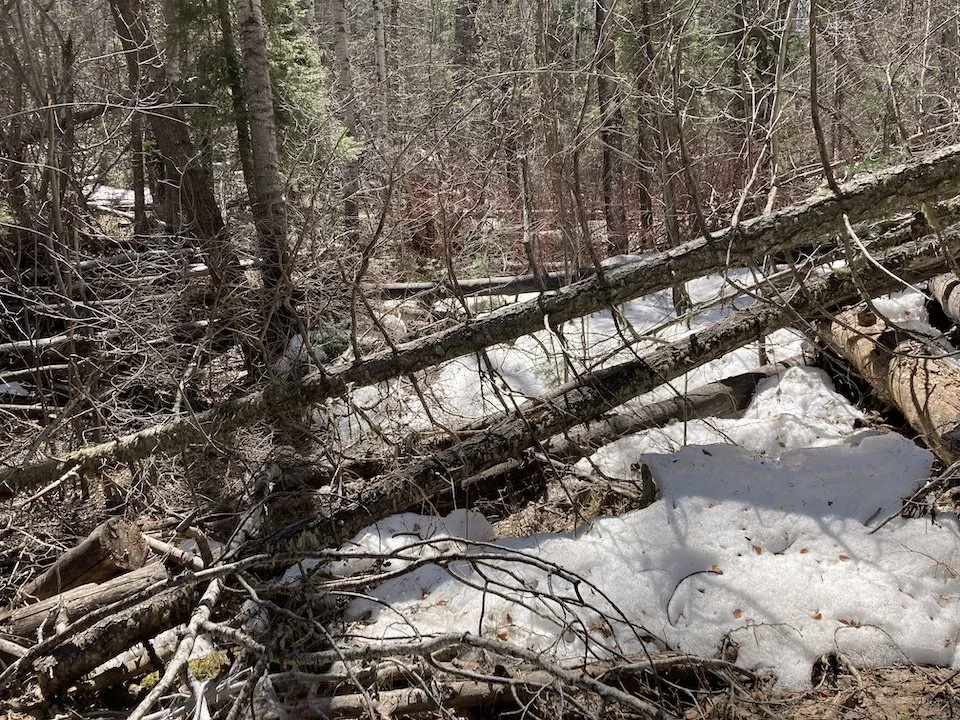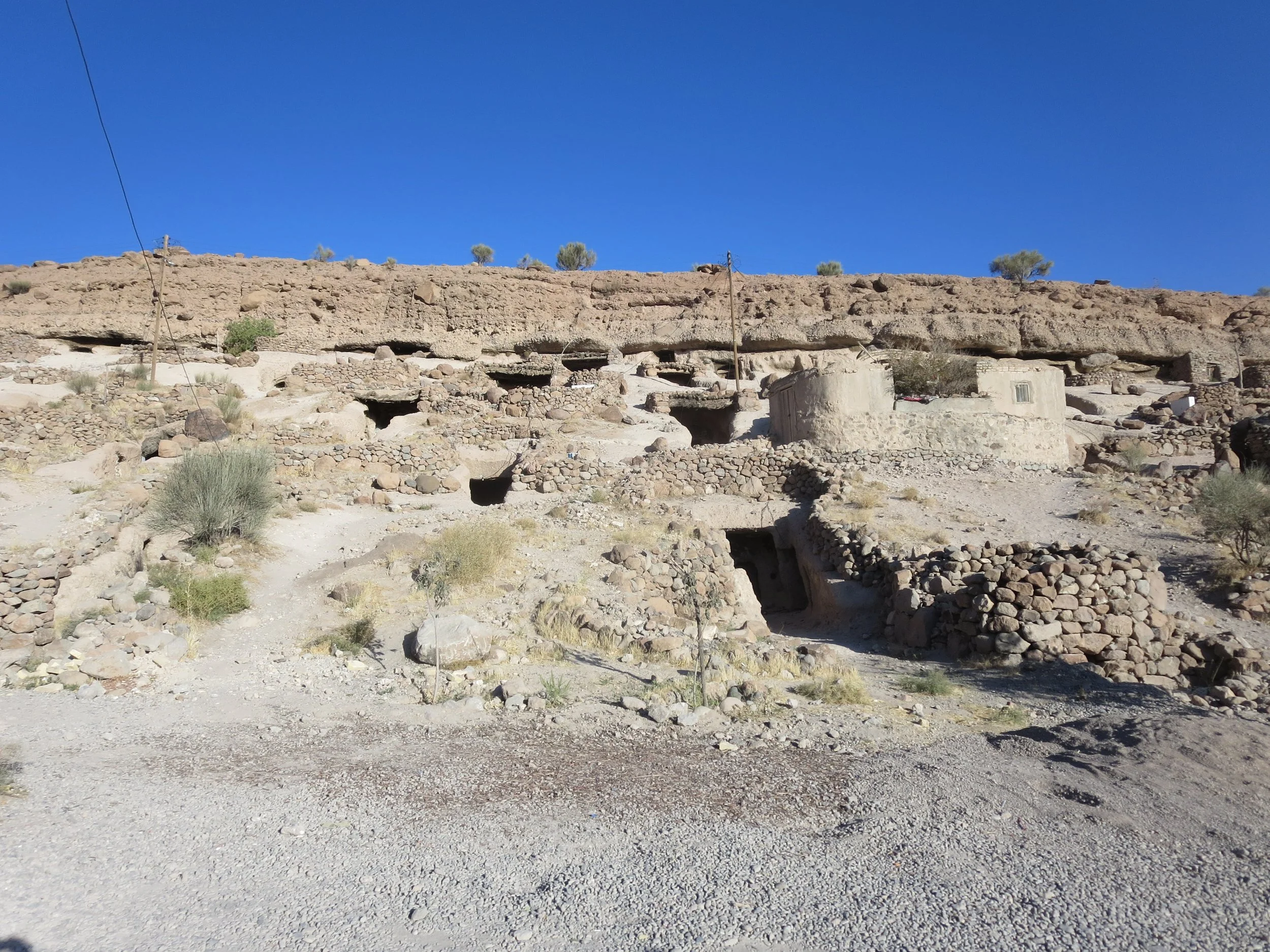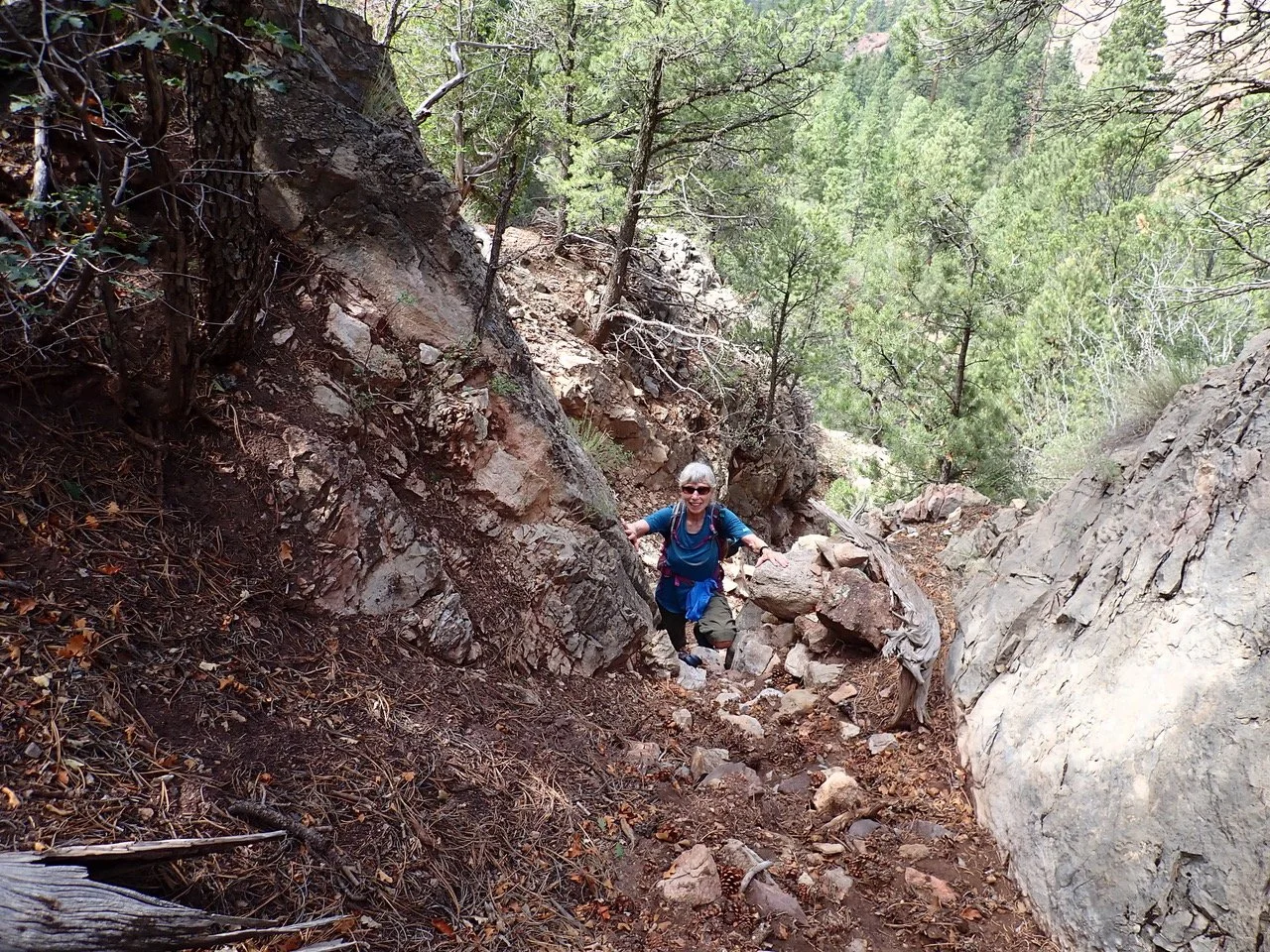Getting Lost
By Nancy King
I’m closer to 87 than I am to 86. Since the beginning of the pandemic, I’ve chosen to hike three times a week, mostly by myself. I tell a friend when and where I’m going, then let her know when I’m home. I stay on trails, bring lots of water, food, first aid supplies, and rain gear. In the past, when I’ve tripped or fallen, I’ve taken care of bruises and cuts with homeopathic arnica pellets and external creams. I was always able to complete whatever hike I’d begun.
On a Saturday in April, I started hiking up the Chamisa trail in the Santa Fe National Forest in New Mexico. The first part is uphill but only moderately steep. There was snow, mud, and ice on the trail, all of it easily navigated. When I reached the post that marks the trailhead of five trails, I started walking up a very steep trail to the top of the mountain. The snow was deep in places and new deadfall covered up the trail, making it necessary to find detours, but I got to the top with only a little extra difficulty. I sat on a log, had a snack, then headed down.
Somehow, inexplicably, I found myself hiking up, steeply up, when I needed to be hiking steeply down. I couldn’t find the trail in the snow-covered landscape no matter where I looked. I was lost. I continued hiking up to find a place where I thought I could see the trail but the up was endless, and I knew I was going in the wrong direction. I hiked down an extremely steep slope in heavy snow, hoping I’d find the trail. Nothing.
I had no idea where I was. I stayed calm, trying to figure out a plan. The forest felt friendly. From past experience I knew that I needed to find what’s called a drainage ditch — where two steep slopes come together to form a kind of path though it’s not a path in the conventional sense. I climbed up to a knoll and, to the left, saw one that looked promising, so I hiked down to it in deep snow. Occasionally I fell into snow that came up to my waist. When I reached the drainage area, I reminded myself to take a deep breath. In the Santa Fe National Forest, drainage areas usually end either at a trail or at the road leading to the ski basin. It was the only plan I could think of.
For about three hours, I followed the drainage ditch filled with dead trees—large and small—that I had to climb over, scooch under, or figure out how to hike up steep inclines to get past them. I fell in deep snow, clambered over rocks, climbed up and over boulders, and pushed my way through bushes thick with branches that I had to navigate to come out the other side.
Occasionally I stepped on snow only to find my boots in rushing water from snow that had melted in the warm weather. I knew I had to focus. Each step meant navigating over, under, or around obstacles. I cautioned myself to step carefully. Although I had banged my legs and could see the cuts and purple and blue welts forming, I ignored them and moved cautiously to avoid breaking or tearing anything. It was hard going. Very hard going. I knew the drainage area had to end eventually, but as I hiked it felt endless.
I stopped when necessary to drink water, eat a bit of protein bar, or pee, but I kept hiking as steadily as I could, wanting to get out while it was still daylight. Being lost while there is light in the sky is hard, but being lost at night . . . I didn’t want to think about it.
When the drainage ditch suddenly ended in a trail, I still had no idea where I was, but following someone’s footsteps was comforting. And when the footsteps ended at what I recognized as the Winsor trail, a popular hiking trail with very little snow, I knew I just had to figure out which direction to hike. I started up a ways, then realized it wasn’t right and hiked back down to where I saw a huge rock, a well-known landmark. I found the beginning of the Chamisa trail and then it was just a matter of hiking up the mile-long trail to the post, then hiking down the 1¼ mile trail to my car. I arrived. Very tired. Safe. I’d hiked almost ten miles in about five hours.
You may ask what I felt during the whole adventure. The truth is, I felt nothing. I didn’t feel scared when I realized I was lost. I didn’t feel relief when I found the first trail, the second trail, the trail back to my car, or when I got home.
How is this possible? I experienced a great deal of traumatic abuse and violence as a child where neither flight nor fight was possible. I learned to freeze inside myself, to be numb, to wait for the abuse to be over, to calmly make any decisions that were mine to make. Getting lost in the forest, where no one, including me, knew where I was, was traumatic. My old coping mechanism helped me make it through an extremely difficult situation.
Santa Fe-based Nancy King’s memoir, Breaking the Silence, (Terra Nova Press) is available online at bookshop.org and amazon.com Please visit www.nancykingstories.com where you can order her books, read about her memoir and novels, learn about her nonfiction dealing with the power of stories, imagination, and creativity, and find information about Nancy’s workshops. You can also order books from Nancy by contacting her at nanking1224@earthlink.net





